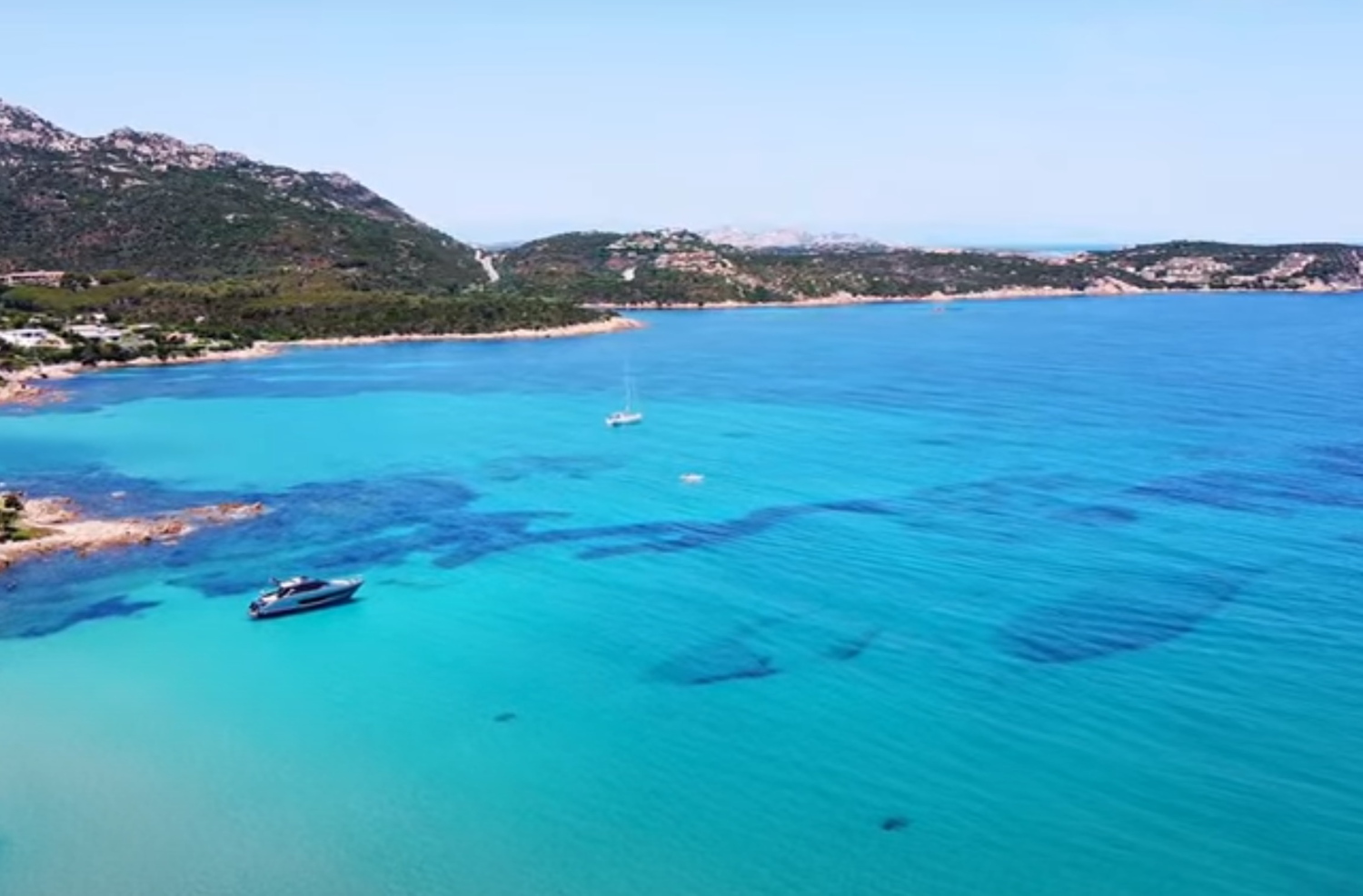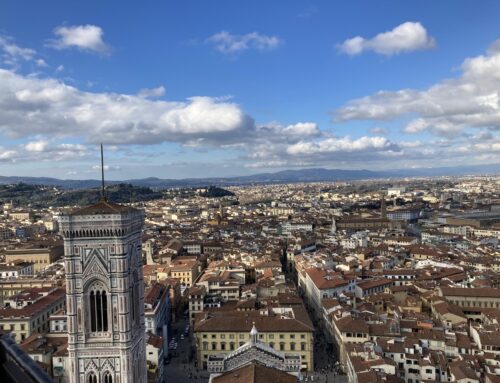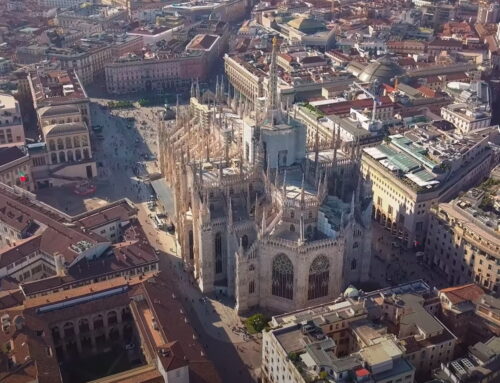Everything you need to know about
traveling to the magical island of Sardinia
If you are looking for the best beaches in the Mediterranean, look no further than Sardinia! Sardinia is the second largest island in the Mediterranean Sea, and one of the five autonomous regions of Italy.
It is well known among Europeans as THE place to visit if you want to immerse yourself into the most gorgeous, turquoise waters of the Mediterranean.
Yet, there is far more to the island than just its beautiful beaches. Check out why Sardinia should be on your bucket list!
Sardinia location and geography
As mentioned, Sardinia is the second largest island in the Mediterranean Sea, behind only Sicily, and it is one of five autonomous regions of Italy.
The northeast corner of the island is located about 150 miles west of the nearest point on the Italy mainland. To the north is the French island of Corsica, to the south is Tunisia in North Africa, and to the west are the Balearic Islands of Spain.

While Sardinia is the second largest island in the Mediterranean, and about 1,700 square kilometers smaller than Sicily, it is far less densely populated. The total population of the island is less than 1.7 million, compared to 4.8 million on Sicily.
Much of the population is concentrated around the capital, Cagliari, at the south end of the island.
Sardinia has a very diverse landscape, with mountains, plains, heavily wooded areas, long stretches of sandy beaches, streams and rocky coastlines.
Sardinia Climate
While Sardinia stretches about 165 miles (265 km) from north to south, the climate is generally the same from coast to coast. However, it does get cooler in the mountainous interior.
For most of the island, the winters are mild, but since the elevations on the interior can reach over 6,000 feet, there is some snow in those areas.
The summers can be quite hot and dry with average high temperatures of about 87 to 88 degrees in July and August, with very little rainfall.

The wet season runs from late October into February, with most rain arriving in November. However, it is generally pretty dry throughout the year on much of the island.

As mentioned, Sardinia is a popular beach destination, particularly in the Costa Smeralda area in the north. Water temperatures in the summer can be over 80 degrees in some areas, and they are generally warm enough for swimming from June through mid October.
A brief history of Sardinia

The Phoenician then Roman remains at Tharros
Much of the following discussion is derived from the Wikipedia page for Sardinia. Archaelogical evidence indicates that humans have populated Sardinia since the end of the Paleolithic period, up to 20,000 years ago.
The most ancient civilization that occupied Sardinia is the Nuragic, which was present from about 18,000 BC to 200 AD.
The Phoenicians arrived sometime around 700 BC and formed a ruling relationship with the Nuragic people that lasted into the 6th Century BC. It was then that parts of the island were conquered by the Carthaginians.
After Carthage was defeated by Rome, Sardinia was occupied by the Romans for the next 700 years through the late 5th century AD.
In the Early Middle Ages, Sardinia was first ruled by the Vandals, and then the Byzantines. However, Byzantium did not exercise much control, and the island was effectively ruled by four kingdoms on the island known as the Judicates.
Genoa and Pisa both tried to control the island, but it eventually fell under the rule of Aragon in the early 14th century, which consolidated the island into the Kingdom of Sardinia.
In the early 1700s, Sardinia was ceded to the House of Savoy on mainland Italy. Eventually, Sardinia became a part of the unified Kingdom of Italy in 1861, and then the Republic of Italy after World War II.
What you should know before you go to Sardinia
Here are some tidbits that you should know before traveling to Sicily, from the obvious to the not-so-obvious.
Currency: Euro
Language: Italian is the most widespoken language in Sardinia. However, Sardinian is the indigenous language and is still spoken widely. While it is also a Romance language, it is viewed as separate from Italian, rather than just a different dialect.
English is spoken in some of the main tourist areas, such as Costa Smeralda, but it is less widely spoken than in other tourist hubs of Italy, such as Florence and Rome. We highly recommend that you learn some Italian before you go. Rosetta Stone is a popular app for learning Italian.
Visa Requirements: For stays under 90 days, you do not need a Visa, but you will need your passport.
Electricity: Europe has different electrical outlets than what we have here in the US, so you will need an adapter.
Car Rentals: The best way to get around Sardinia if you plan on touring the island is by car. You’ll need an international driver permit along with your driver’s license. If you do not have an international driver’s permit, head on over to your nearest AAA office.
For finding the best deals on rental cars, check out Discover Cars.
Flying to Sardinia: There are three airports that accept international flights to Sardinia. The busiest airport is near Cagliari at the south end of the island. It is best to fly there if you plan on staying primarily on that part of Sardinia. Olbia is the next busiest airport located in the northeast part of the island. It is the most popular airport for vacationers planning on staying in Costa Smeralda and other areas at the north end and eastern parts of Sardinia. The third airport is near Alghero on the west side of the island. This is a good option if you plan on exploring the west and northwest parts of the island. Unfortunately, there are no direct flights to any of these airports from the U.S., but there are many connections from Europe and other parts of Italy. Check out our tips for flying to Italy.
If you don’t intend to rent a car, and need transportation to your hotel, check out Kiwi Taxis. They provide service from Olbia and Cagliari airports.
The Trains: While there are trains that provide service between some towns on Sardinia, it’s simply not an efficient way of getting around, and is not recommended.
Travel Insurance: Anytime you plan on a trip overseas, you should consider purchasing travel insurance. Travel insurance can cover the cost of medical emergencies, lost baggage, unexpected trip cancellations, etc.
Travel Insurance Master can help you find the coverage you need for your trip.
When is the best time to go to Sardinia

Castelsardo
Any time is a great time to head to Sardinia, but keep in mind that many businesses in some of the small beach resort towns generally shut down for the winter.
Otherwise, visiting the island to check out places like Cagliari, Alghero, Bosa, and Castelsardo can be done anytime.
Some of the beach resorts will be a bit crowded during the peak summer months of July and August.
However, because Sardinia has over 200 beaches to visit, and there are great beaches on all sides of the island, you can find your personal slice of paradise somewhere.
Given that the climate stays generally mild throughout the year, the water temperatures start hitting the low 70s by June, and they remain at the level into October.
If you are not intending to head to the beach, keep in mind it can get pretty toasty in Sardinia in the summer.
Major destinations in Sardinia

Pevero Golf Club
At the top of the list of places to visit in Sardinia has to be Costa Smeralda. This is where many of Europe’s jet set head to the beach in the summer.
The water there is as beautiful as you will find anywhere in the world, comparable to the Maldives and anywhere in the Caribbean.
Keep in mind that Costa Smeralda caters to the upscale traveler, so if that is not your cup of tea, you have plenty of other beach resort options in Sardinia.
We recommend Villasimius, Pula, Costa Rei and Sant’Antioco island in the south; Oristano, Bosa and Alghero in the west; virtually anywhere in the north; and San Teodoro and Orosei in the east.
Of course, there numerous small hidden gems that you can find during your travels.
If you are interested in visiting another of Italy’s beautiful ancient cities, Cagliari will fit that bill.
 Cagliari is an excellent base location if you plan on staying in Sardinia for a week or more. You get everything a historic city has to offer… museums, beautiful churches, shopping, restaurants and nightlife.
Cagliari is an excellent base location if you plan on staying in Sardinia for a week or more. You get everything a historic city has to offer… museums, beautiful churches, shopping, restaurants and nightlife.
There is also a long stretch of beach (Poetto Beach) just a short drive to the east of downtown and the marina. And, several golf courses are located within an hour of Cagliari.
About 30 minutes to the southwest of Cagliari near the town of Pula are the ancient Phoenician and Roman ruins at Nora.
About 45 minutes to the west of Cagliari is Sant’Antioco island, where you will find the namesake town along with some breathtaking scenery. It’s definitely worth a day trip.
About an hour drive to the north of Cagliari in the town of Barumini you will find the Su Nuraxi, the most famous nuraghe in Sardinia. Nuraghe’s are megalithic structures only found on Sardinia, and they date back to the Bronze Age.
We mentioned the towns of Alghero and Bosa, located on the west coast. It is worth taking a couple days to explore them both.
Bosa is a small town of less than 10,000 people located slightly inland along the banks of the Temo river, which spills into the Mediterranean just to the west. This colorful town is notable for its churches, small museums and festivals.
Oristano is also along the west coast, but further south. This town of about 31,000 people is noted for a number of ancient churches dating as far back as 1100. There are some spectacular beaches located nearby.

Bosa
Alghero is the largest city on the west coast with about 45,000 inhabitants. It has a nice promenade along the waterfront, and nice stretches of beach within walking distance from the marina.
It you are staying in the Costa Smeralda area in the northeast of Sardinia, you will want to take a day trip to visit La Maddalena island via a ferry from Palau. Its a beautiful town to visit and you can take boat trips to the other islands in the La Maddalena archipelago to find more spectacular beaches.
While Olbia is primarily known as the jumping off point for visitors on their way to the glitzy areas of the Costa Smeralda, it’s worth spending a day or two here as well.
It’s a bit less pretentious, but you will find plenty to do, such as strolling along Corso Umberto, or visiting its churches and museums. In the evening, you’ll find some excellent options for dining.
The heart of Costa Smeralda is Porto Cervo. Here is where you can experience lifestyles of the rich and famous!
Porto Cervo is about a 30 minute drive north of the airport in Olbia. It has everything you would expect to find in an upscale resort town… beautiful beaches, a marina showcasing sizable yachts, upscale shopping, fine dining and the Pevero Golf Club.
One more thing you should consider doing when traveling to Sardinia is a boat tour to the cave beaches in the Gulf of Orosei on the east coast. You can hire a tour, or actually rent a boat yourself and tour some amazing beaches, including Cala Luna, seen below.
As you can tell, there is a lot to see in Sardinia, so you’ll either want to take multiple trips, or spend a couple weeks on this beautiful island!

Cala Luna





